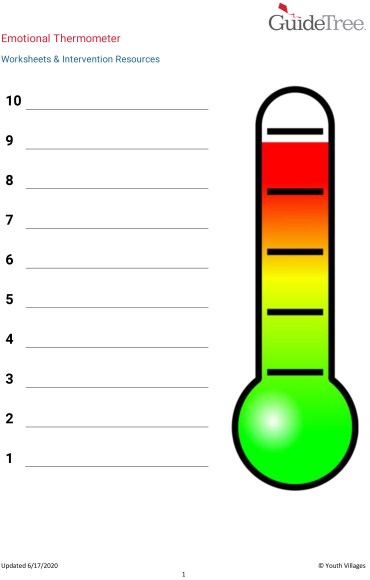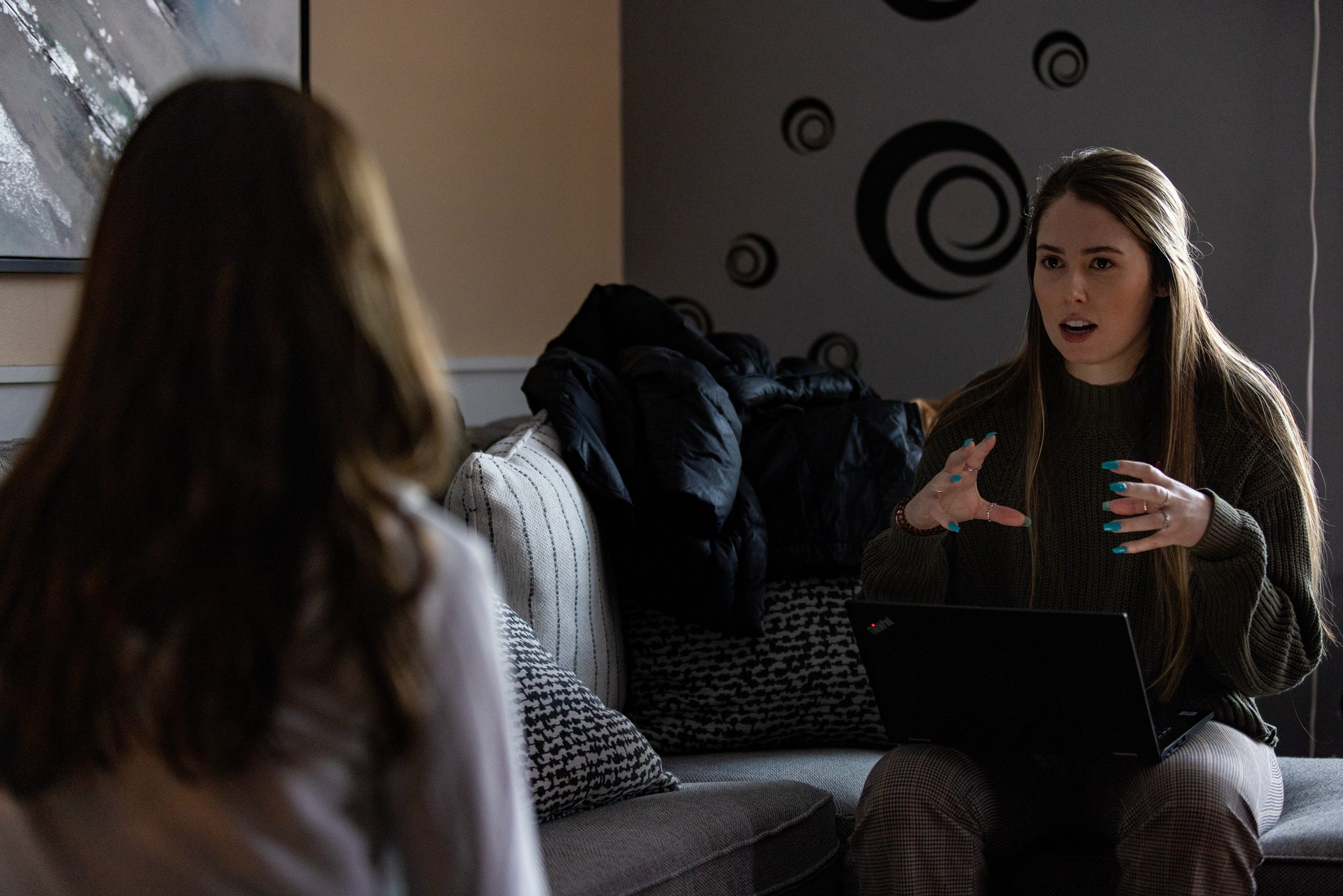It was around 2 a.m. when Carmen realized her 12-year-old daughter was in danger and needed help.
Haley wasn’t in her room — or anywhere else in the house. Carmen tracked Haley’s phone to a main street in their central Massachusetts community.
“She don’t know the danger that she was taking out there,” said Carmen, her voice choked with tears. “Walking in the middle of the night, anything can happen.”
Carmen picked up Haley, unharmed. But in those early morning hours, she learned about more potentially dangerous behavior — provocative photos her daughter had sent and plans to meet up with a boy in high school. She also remembered the time a few years back when Haley was bullied and said she wanted to die. Carmen asked KHN to withhold the family’s last name to protect Haley’s identity.
Carmen drove her daughter to a local hospital — the only place she knew to look for help in an emergency — where Haley ended up on a gurney, in a hallway, with other young people who’d also come with an urgent mental health problem. Haley spent the next three days like that. It was painful for her mother, who had to go home at times to care for Haley’s siblings.
“Leaving [her] in there for days, seeing all those kids, it was terrifying for me,” Carmen said.
That week last October, Haley was one of 115 children and teenagers who went to a Massachusetts hospital ER in a mental health crisis, waiting days or even weeks for an opening in an adolescent psychiatric unit. The problem, known as “boarding,” has been on the rise across the country for more than a decade. And some hospitals have reported record numbers during the covid-19 pandemic.
“We see more and more mental health patients, unfortunately, languishing in emergency departments,” said Dr. Chris Kang, president of the American College of Emergency Physicians. “I’ve heard stories of not just weeks but months.”
But now a handful of states and counties are testing ways to provide urgent mental care outside the ER and reduce this strain on hospitals. Massachusetts has contracted with four agencies to provide intensive counseling at home through a program called emergency department diversion. It’s an approach that could be a model for other states grappling with boarding. For Haley, so far, it’s a game changer.
To determine what’s best for each child, hospitals start with a psychological evaluation, like the one Haley had on her second day in the ER.
“I didn’t know if they were just going to send me home or put me in a really weird place,” she said. “It was, like, really nerve-wracking.”
DeAnna Pedro, a liaison between pediatrics and psychiatry at UMass Memorial Medical Center, reviewed Haley’s report and considered recommending time in a psychiatric unit.
“She was doing a lot of high-risk things,” Pedro said. “So there was a lot of thought given to: Would we need to go to something extreme like a psychiatric admission?”
daughter Haley’s behavior.(Jesse Costa / WBUR)
But both Pedro and Haley’s parents worried about this option. It would be a dramatic change for a 12-year-old whose only experience with mental health care was with her school counselor. So instead Pedro contacted Youth Villages, a youth diversion agency Massachusetts hired during the pandemic. Haley’s family met with a supervisor right there in the ER.
Later, during the first home visit, there was a safety sweep.
“We look under rugs, we look behind picture frames, we look in the dirt of plants,” said Laura Polizoti, the counselor from Youth Villages assigned to Haley’s case. Youth Villages also provided window and door alarms that Haley’s parents could activate at night.
Counseling for Haley and her parents started right away. A key goal was to understand why Haley was sneaking out at night and taking inappropriately sexual pictures.
During a counseling session one afternoon in December, Polizoti focused on Haley’s anger at herself and her mom.
“Have you ever done an emotional thermometer before?” Polizoti asked, laying a large graphic of a thermometer on the table. It had blank lines for five emotions, from cool to hot.
“It can help you see where your feelings are at,” Polizoti explained. “Then we’ll come up with coping skills for each level.”
In the blank next to the bottom of the thermometer, Haley wrote “chill.” At the top, in the red zone, she wrote “infuriated.”
“Infuriated — that’s a good word,” Polizoti said. “So when you’re infuriated, how do you think you feel physically? What do you notice?”


Haley told Polizoti her palms get sweaty, she stops talking, and she makes “a weird face.” Haley scrunched up her nose and frowned to demonstrate. Polizoti laughed.
As the exercise unfolded, Polizoti asked Haley to think of ways to calm herself before irritation turns to anger. Haley suggested spending time alone, watching TV, playing with her siblings, or jumping on the family’s trampoline.
“That’s a good one, the trampoline,” said Polizoti. “Can we come up with one more?
“I could, like, talk with my mom?” Haley said.
“Awesome,” said Polizoti.
Initial numbers suggest this diversion program is working. The Massachusetts Department of Mental Health said that as of early February 536 young people, ages 4 to 18, had worked with one of the four agencies. A large majority, 82%, have not returned to an emergency room with a mental health concern; 92% have met their treatment goals, or were referred for additional treatment once stabilized by the initial diversion service.
Advocates for parents of children with mental health issues said the main complaint they hear is that hospitals don’t present the home care program option quickly enough, and that when they do, there is often a wait.
“We would love to have more opportunities to get these diversions with more families,” said Meri Viano, associate director at the Parent/Professional Advocacy League. “We’ve seen in the data and heard from families that this has been a great program to get children in that next place to heal faster.”
And then there’s the relatively affordable cost: $8,522, on average, for the typical course of care. At Youth Villages, that pays for three 45- to 60-minute counseling sessions a week, in a patient’s home or other community setting, for three months. The savings are significant. One study calculated the cost of pediatric boarding at $219 an hour, or $5,256 for just one day. And that’s before the expense of a psychiatric hospital stay.
In Massachusetts, the diversion program seems to be relieving overburdened hospitals and staff. A report from the Massachusetts Health & Hospital Association shows youth ER boarding numbers dropped as more hospitals started referring families to home-based options. MHA said the numbers are hopeful.
Kang, with the American College of Emergency Physicians, is optimistic about mental health organizations like Youth Villages offering urgent care outside of hospitals, but said starting diversion programs isn’t easy. If state and local governments don’t take the lead, hospitals need to vet community mental health partners, create care agreements, and figure out how to pay for home-based services. All this while hospitals are overwhelmed by staffing shortages.
Making these kinds of systemic changes may require “getting past some inertia as well as some reluctance to say, ‘Is this really what we need to do?’” said Kang.
Some families hesitate to try diversion if their child takes psychiatric medications or they think the child should be prescribed those medicines. Youth Villages does not have prescribers on staff. Children who need medication see a psychiatrist or primary care doctor outside the program.
It’s not clear what percentage of children and teens who go to a hospital ER for mental care can be treated at home rather than in a psychiatric unit — home isn’t always a safe place for a patient. But in other cases, home care is the best option, said Matthew Stone, Youth Villages’ executive director in Massachusetts and New Hampshire.
“Many of the mental health challenges that these children are facing are driven by factors in their natural environment: their school, their neighborhood, their peer system,” said Stone. “It’s our view that you really can’t work on addressing those factors with a child in a placement.”
Clinicians in psychiatric units do work on family and social issues, sometimes bringing family members into the hospital for sessions. There’s no data yet to compare the outcomes.
Some mental health advocates argue that the need for diversion will subside as Massachusetts launches a multiyear plan to improve mental health care. But for the time being, Carmen and other parents coping with a new mental health crisis will likely still head to an ER, where they may be offered intensive counseling at home.
“A lot of parents don’t know what the kids are going through because they don’t want to accept that your kids really need help,” Carmen said. “Hopefully this can help another family.”
This article is from a partnership that includes WBUR, NPR, and KHN.


